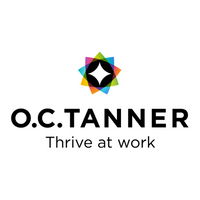High five: Tapping into the power of peer-to-peer recognition
Social wellbeing is all about connections and their quality. Psychologist Abraham Maslow ranked third the need for connection in his hierarchy of human needs. Therefore, it’s not surprising to see the importance social connection is gaining in plans laid out by HR leaders to improve and develop their cultures.
With so many companies going through change and experimenting to adapt, the connections employees make, sustain and develop, and their quality, are paramount to both company and individual success and resilience.
A test of leadership
It’s a daunting task that requires leaders to really know their employees and pay closer attention to how connections are created and sustained in their cultures. And as part of this, the power of peer-to-peer recognition must be understood and maximised.
Leaders and organisations play a major role as enhancers of social connections, helping employees have and subscribe to a purpose in their work and feel a strong sense of belonging.
By giving recognition regularly, leaders demonstrate and validate to their team members their value while creating new channels that make those individuals’ skills, accomplishments and impact visible to wider groups. This also enhances employees’ chances of making new connections and increases the quality of existing ones.
But recognition shouldn’t just be top-down. Peer-to-peer recognition is a powerful tool for making connections and strengthening them. When it’s given in a personalised and meaningful way, and there is flexibility around it, the effects of recognition extend much further.
Fostering connections
Here’s how individuals can foster connections through peer-to-peer recognition:
• Personalised recognition shows that the giver really knows the receiver and strengthens feelings of validation and care that lead to reciprocating the behaviour. The more natural it feels, the more powerful its effects.
• Thoughtful planning of recognition moments contributes to stronger feelings of community, particularly when the occasion is a shared accomplishment.
• A career milestone celebration can enhance the sense of community, by inviting messages and contributions from individuals with whom the recipient has interacted with during their career. Where possible, leaders should extend these invitations to the recipient’s connections outside the company, such as family, friends and former colleagues.
• In remote/hybrid working settings, technology should be blended with human interaction and combined with communication channels to make recognition widely known.
• Peer-to-peer recognition can be integrated into daily/weekly activities, such as inviting team members to appreciate their peers during team huddles or project meetings.
• By make recognition possible in the flow of work, this simplifies the giving of appreciation. If using dedicated recognition technology, this should be integrated with the tools people use throughout the day and field workers should be able to access a recognition app on their mobiles devices.
• Peer-to-peer recognition can be ‘socialised’ by making it visible everywhere employees have access such as the intranet, shared offices, cafeterias and team boards.
Encouraging peer-to-peer recognition
Organisations should also encourage and support peer-to-peer recognition by:
• Equipping and developing leaders to embrace modern leadership skills which include finding ways to connect their people to purpose, their accomplishments and each other.
• Designing onboarding experiences that embody recognition and ensure early connections are made both with the immediate team and colleagues outside it.
• Rallying people around what they have in common, for example by communicating common goals and how individuals contribute towards them.
• Celebrating success together. Whether it’s a company anniversary, meeting an ambitious target, or something else, leaders should highlight how this success was possible, acknowledging the individuals who contributed to it and the impact they created.
• Creating new connections with purpose. When the need for individual autonomy and empowerment is met, employees have a deeper, stronger sense of connection to their employer and are less likely to feel left out.
• Ensuring recognition is integrated into everyday working life. Sadly, recognition is usually one of the first areas hit when companies cut costs, typically because their recognition practices are transactional rather than an active part of wider culture change and development.
A sense of appreciation
O.C. Tanner’s research shows that even in the worst Covid-19 affected industries, companies that continued to recognise their people fared much better than those that didn’t, as they provided a sense of appreciation and security during times of uncertainty and transition.
Connections have deep implications in our work, and recognition only helps amplify them and their positive effects. Employees who feel strongly connected to their teams and organisations not only perform better, but they also feel seen, valued and believe they matter.
Supplied by REBA Associate Member, O. C. Tanner
Giving teams the integrated tools they need when, where and how they need them.








